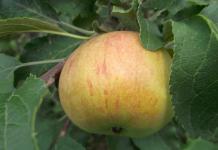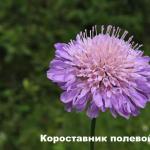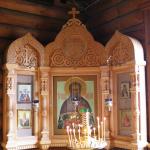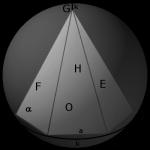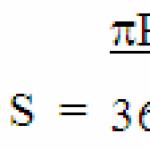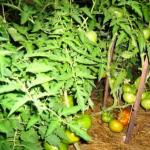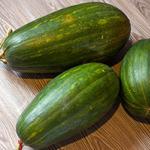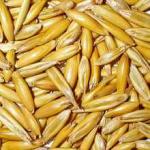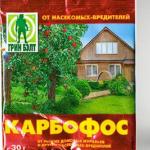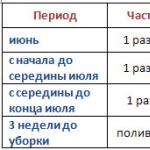The apple tree is perhaps the most common fruit tree in our gardens. It has been grown since time immemorial. And this is what almost all novice gardeners want to plant first on their plot. The varieties of apples today are amazing. There are really a lot of them: both ancient ones, known for a long time, and new ones, bred or brought to our country quite recently.
How to choose exactly the apple tree that will be rich in harvest, unpretentious, resistant to diseases and whose fruits will be to the taste of the gardener and his family members? Below we present varieties of apple trees for central Russia, photos, their features, advantages and disadvantages. This will help you make your choice.
So, the first thing worth saying is that trees are:
- summer - ripen early, around July. Their fruits are not long-lived; they need to be eaten or processed within 2-3 weeks.
- autumn - involve harvesting in early autumn. They are usually stored until mid-winter;
- winter or late - fully ripen at the end of autumn. They are the easiest to keep and can be stored literally until the beginning of summer.
It is interesting that winter and autumn types of apples ripen with further storage.
Summer varieties of apple trees photo with name and description, care
Summer fruits are varied. Among them you can find a variety of taste qualities and structural characteristics.
White filling
A widely known and very popular variety. You can enjoy this already at the beginning of July. The height of an adult tree is 3-5 m, the fruits are round, greenish in color, becoming almost white at the stage of full ripeness. The pulp is aromatic, somewhat loose and coarse-grained. Moderately sour. It is very important to harvest the crop without allowing it to become overripe, since in this case it loses its quality. Picked fruits spoil quite quickly, so you need to use them without delay. White filling is winter-hardy; the seedling begins to bear fruit in the 5th year.
Melba
An apple variety of Canadian origin, ripens in late summer. They are medium, often large in size, rounded and elongated. Their color is yellowish, half decorated with an elegant red blush with stripes. Melba pulp is snow-white. Incredibly good, sweet and sour, with a noticeable candy smell. It bears fruit at 4 years old. Relatively winter-hardy.
Mantet
Also came to us from Canada. Its fruits are round-oblong, brightly colored, speckled with red on a mostly greenish background. They are quite large, pleasant, practically free of acid, dense, juicy, slightly creamy in color. Mantet does not last long, only 2-3 weeks. It begins to bear fruit quite early, already in the 4th-5th autumn. It is resistant to major diseases, but does not tolerate very severe frosts.
Grushovka Moscow
An ancient, but often found in our time, variety. Ripens in August, it will have to be consumed and used within 2-4 weeks. The fruits are medium-sized, small, round, somewhat flattened. Their main color is pale green, covered with a pink blush of spots and stripes. The pulp of Grushovka is loose and tender, juicy, more sour and with a pleasant aroma. The tree is tall and begins to produce a plentiful, rich harvest quickly. The winter hardiness of Grushovka will not cause any worries even in the coldest year.
Candy
A variety of sweet apples, as its name eloquently suggests. In addition, it is beautiful, yellow, with a reddish and even brown blush. Round in shape, white inside, juicy and tender. They ripen by mid-August. Shelf life is limited to 2-3 weeks. They are poorly transported. Trees of the Candy variety will allow you to enjoy the fruits already at 4-5 years old, they are unpretentious in care, resistant to diseases, and winter-hardy.
Autumn varieties of apples photo with description, care
Autumn fruits are best suited for preservation.
Mac
Canadian variety, medium-sized fruit, yellow-green, with almost purple stripes on a red background. The center is white, often has characteristic reddish veins, and is pleasantly spicy. An excellent commercial variety. A vigorous and spreading tree. Harvesting begins in September; it can be eaten until mid-winter. Disadvantage: low frost resistance and susceptibility to disease.
Streifling
A variety of folk selection, originally from the Baltic countries. These are large, yellow-green fruits covered with orange-brown stripes. Inside they are pale yellowish and juicy. Somewhat reminiscent of raspberries, just as sweet and sour. Can be collected from the beginning of autumn, stored in a cool place until approximately December. Streifling is winter-hardy, but bears fruit only from 8-9 autumn.
Glory to the winners
Hybrid of Mackintosh and White filling. Ripens in early autumn, keeping quality until mid-winter. Quite large, oblong, green in color, with a spectacular red blush. A characteristic feature of the variety is noticeable dots on the skin. The pulp of Glory to the Winners is creamy and smells amazing. They are transportable. The apple tree of this variety is vigorous and spreads over time. Under particularly favorable conditions, it can bear fruit literally in 2, but usually in 4-5 autumn. The variety is productive, resistant to frost, but the downside is that it does not tolerate drought well.
Cinnamon Striped
A well-known, even ancient, variety ripens mainly in September. Greenish-yellow in color, with a cover of clear stripes on a reddish background. Its flesh is yellowish, sometimes with red veins, tender, dessert-like, with clearly perceptible notes of cinnamon. Fruits of this variety are guaranteed to last until January. It begins to give birth from 8-9 autumn, its yield is moderate. The winter hardiness of Cinnamon Striped is perhaps the best among other varieties of apple trees growing in the middle zone.
Zhigulevskoe
The variety is widespread. The fruits are red-striped. In cross-section - cream-colored, delicate, coarse-grained. It is moderately sour. Ripens in late August - early September, lies well until December. The seedling will produce its first harvest in 5 years. Fruits abundantly, almost annually. It is resistant to tree diseases, but this apple tree is afraid of severe frosts.
Winter varieties of apple trees, photos with descriptions, care
Winter apples are distinguished by their strong structure, so they are well preserved.
Antonovka
An ancient, beloved winter apple variety. Its apples have a beautiful, yellowish-golden color and a unique, recognizable aroma. The inside of such an apple is snow-white, crispy, with a subtle sourness. The tree is strong, harmonious, with dense foliage. It begins to bear fruit only at 7 years of age. Even the youngest Antonovka seedlings are not afraid of frosts. In general, the variety is unpretentious and disease resistant.
Jonathan
The variety is popular and has many advantages. It was released in the USA. Its fruits are medium and large in size, colored yellow-green, covered with a dark red blush, sometimes “rusty” with a mesh. Their pulp is strong, crispy, creamy, juicy, dessert-like. The yield of Jonathan apple trees, starting from the 5th year, is very high, with good soil and appropriate care. They ripen in October and are successfully stored until April. Susceptibility to diseases and winter hardiness are average.
Pepin saffron
A variety of winter apples of domestic selection. It has round fruits, yellowish-green in color, with a magnificent red blush and a dense creamy center. Their taste is excellent, grape-sweet, interestingly spicy, with an unsurpassed aroma. They ripen in October and lie well until March and April without loss of quality. The tree bears fruit abundantly from 5-7 years, but requires regular pruning. In too cold winters it tends to freeze, but, however, it then recovers well.
Golden Delicious
Ready for harvest in September and keeps well until March. The fruits are medium and often large, round, slightly elongated-conical. When ripe, they have a yellow-golden skin color. Inside they are dense and incredibly juicy, creamy in color. After lying down, they become much more tender. The taste of Golden Delicious is sweet and pleasant. This variety is of American origin. Regular fruiting of this apple tree occurs from the age of 7. Its frost resistance is good, but it is difficult to tolerate drought.
Welsey
This winter apple variety was also bred in the USA. Its fruits are medium in size, round, strongly flattened, yellow-gold in color with a cover in the form of red stripes. The inside is white, sour, and has a subtle, pleasant aroma. The interesting thing is that their taste can change every year. Welsey apple trees ripen in early autumn and remain in a specially equipped storage facility until February. Seedlings begin to produce crops from 4-5 years. They are quite plentiful. Winter hardiness is normal, they resist diseases well.
Sinap Orlovsky
It ripens in September and is preserved well until May. The fruits are quite large, oblong, golden, with a delicate and subtle blush, and slightly sour. The trees bear fruit from 4-5 autumn, regularly, one might say almost annually.
Dwarf apple tree varieties, photo
Dwarf apple trees grow where the area allocated for the garden is small. A dwarf apple tree is obtained by grafting the required variety onto a special rootstock. The tree grows to a height of only 2-4 m, compact. You can expect fruits already in 3-4 years. Due to their short stature, collecting them is very convenient.
Result:
The presented varieties of apple trees with photos are very popular due to their qualities. When planting and planning a garden, you should make your choice in favor of several types. Summer, autumn and winter varieties of apple trees planted together for central Russia will provide you with the opportunity to enjoy these fruits almost all year round, from July to May. The above varieties of apples with descriptions and photos will help you plan the planting of a beautiful, productive garden.
18.05.2014These studies were carried out by employees of the Fruit and Vegetable Institute named after. I.V. Michurin Michurinsky State Agrarian University, and above all by Professor N.S. Samigullina and Associate Professor K.V. Kondrashova in the process of many years (since 1985) restoration of the monastery gardens of the Valaam archipelago.
It seems to me a miracle to identify ancient varieties of apple trees, some of which have already left our gardens and even forgotten, and moreover, in unusual growing conditions (on rocks, almost in the Arctic), where many of them have noticeably changed. And this miracle happened thanks to the extraordinary perseverance, professionalism and some other, I would say, “mysterious instinct” of experts.
I remember how in the first years of work N.S. Samigullina and V.K. Kondrashov brought the fruits they had selected from Valaam to the All-Union Meeting of Gardeners in the Nikitsky Botanical Garden (Yalta) and, showing them to many of us, tried to at least somehow advance with determination of varieties. Alas, none of the eminent ones could really say anything; I admit that I was one of them.
And now, more than 20 years later, a catalog of retro varieties of the Valaam archipelago has appeared, one might say. And this is very important. Firstly, now we know exactly what varieties of apple trees grew for a long time in the harsh conditions of Valaam, a description of these retro varieties is given and it is shown that in some of them, under the influence of unusual growing conditions, the fruits noticeably (sometimes even beyond recognition) changed, trees, rhythm of development.
A low bow to you, great devotees of Russian gardening, for your selfless work in reviving the gardens of Valaam, restoring the “thread of times” in their development and passing on to us the unique experience of the great garden builders of the Valaam Monastery.
And who knows if, after reading this material, some of the experienced gardeners will have a desire to have a multi-varietal apple tree in their garden, which is a garden tree of the Valaam Monastery. Has it appeared?! Then I wish you good luck.
I.S. Isaeva
18.05.2014Summer varieties
Arcade summer. Trees of this variety have a sparse crown, elongated upward, shoots are reddish, slightly pubescent. The leaves are dark green, very slightly pubescent. The fruits are medium-sized, cup-shaped, light yellow, without outer coloring. The pulp is yellowish, loose, very sweet. Sugar content is more than 12%, ripening period is very early. In fruiting it is sharply periodic; on Valaam it bore fruit in 1986 and 1988, and in 1989 there were single fruits. Found in plantings of all three gardens.

Red pear
Red pear. In the lower garden, number N-89, there grows a tree similar in morphological characteristics of shoots, leaves, and flowers to Moscow Grushovka. The similarity in flowering was so strong that in 1986 Golu was registered as Moscow Grushovka. However, when the fruits ripen, the differences between Moscow Grushovka and this tree are completely clear. The fruits are medium-sized (70 g), round, often with a slightly elongated upper part of the fruit, slightly ribbed. The main coloration is practically not noticed due to the blurry dull crimson blush. This variety does not have the streaks and stripes characteristic of Moscow Grushovka. The ripening period, the quality of the fruit pulp and other morphological characteristics are similar to Moscow Grushovka.

Grushovka Moscow
Grushovka Moscow. An early variety, ripens on Valaam in mid-September. The variety is typical in crown shape, leaves, and flowers. The fruits change beyond recognition. The shape is round, often elongated, strongly ribbed fruits. There is either no blush or a weak blush. At the same time, tree No. 89 (lower garden) has round-oblong fruits with a blurred reddish blush. And fresh-sweet taste. All signs of wood, leaves, flowers are completely inherent in Moscow Grushovka.

Calville white
Calvil white summer. Widely distributed in the gardens of Valaam: in the apothecary garden - 4 trees; on average - 6, in the bottom - 9. Identification of this variety in previous years was impossible, because the fruits were extremely small, cracked very much and before ripening had a blush, which weakened by August. The winter hardiness of trees of this variety is good, fruiting is abundant, but periodic. Trees with a dense hemispherical crown, many shoots, they are intertwined. The leaves are large, green, dull, oval-shaped, toothed and crenate on thin petioles. The fruits are medium and above average in size, elongated-conical in shape and quite noticeable. ribs and with a very well-defined “crown” in the upper part of the fruit. The skin is greenish-white with subcutaneous spots without integumentary coloring. The stalk is long, the funnel is very small, swollen, and sometimes with an influx. The pulp is white, loose, of good taste. It contains 0.87% acids, but with a sugar content of 12.3%, in general, their combination provides a refreshing taste, but with a predominance of sugar. In 1989, ripening was early - in mid-August.

Korobovka
Korobovka. The shoots are dark brown. The leaves are small, rounded-elliptical, green, heavily pubescent. The serration is finely toothed, the petiole is of medium length. The fruits are small (30 - 40 g), onion-shaped, not ribbed, yellowish with clearly visible, rather sharply defined red stripes on a speckled background. Subcutaneous points are small, barely noticeable. The peduncle is of medium length. The funnel is slightly rusty, quite wide and deep. The calyx is closed, located in a wide but shallow saucer, with very characteristic large tubercles (pearls). The pulp is yellowish, dense, with a pleasant sweet-spicy taste. As the general health of the tree continues to improve, an increase in fruit size and improved flavor should be expected.

Myrons. The trees are very tall and spreading. The leaves are oblong, green with reddish veins. The fruits are medium (70 g), oblong-oval, yellow with a speckled-striped red blush. The pulp is whitish-cream, coarse-grained, dryish, sweet with bitterness (difficult to swallow), mediocre taste. Ripening period is late summer and early autumn, ripening is not simultaneous.

Myron sugar
Myron sugar. Its flowering rate in 1989 was 4.5 points, and its fruiting rate was 2.8 points. In the winter of 1986 - 1987. freezing of fruits up to 1 point was noted, however, due to their good restorative ability, this did not negatively affect the formation of the crop. In 1989, the harvest from a tree of this variety (for example, from tree No. S-75) was 100 kg.

Padding
Padding. Ripens by mid-September. The leaves are large, loosely folded into a boat, and turn red in autumn. The trees are very old, with the exception of C-105. In this plant, the characteristics of Papirovka are typical, with the exception of the shape of the fruit. The fruits are oblong with strong ribbing in the upper part, with five tubercles in the saucer. The combination of tubercles and the constriction of the fruit under them (at a distance of 1.5 - 2 cm from the calyx) forms a “crown” characteristic of some varieties growing on Valaam, including Papirovka. Papirovka trees growing in the lower and upper gardens, in addition to the listed characteristics, in August–September had fruits with a blurred orange-red blush. In bed, by the end of October, the blush weakened.

Striped sweet
Striped sweet(Sweet fruit, Valaam sweetness). The variety is represented by one specimen (A-96) aged 100 years. Tree with a wide spreading crown. The shoots are quite thick. Heavily thickened with leaves. The leaves are very leathery. The fruits are medium-sized - 50 - 60 g, broadly truncated-conical, greenish or yellow-green, and with brown stripes on the sunny side. The pulp is creamy, loose, juicy, and has good taste.
In 1989 there was an unprecedentedly high harvest.

Suisleipskoe
Suislepskoe(A-5; A-67; A-55; C-4; N-26; N-75; N-98). Trees of this variety on Valaam bore fruit abundantly, and the fruit size was large enough only in 1989. The shoots are thick, reddish, the leaves are large, round, green, with a slightly raised serrated edge. The fruits are round-conical, whitish-greenish in color with a delicate pink blush. The pulp is white, juicy, very good taste. The fruits of this variety suffered from frost (by 1.6 points). The degree of flowering is on average 2.6 points, fruiting - 1.5 points.

Through filling
Through filling yellow(A-71; N-83). Summer variety. Large size trees. Crown with a large number of long, tangled branches. The shoots are medium thick, faceted, reddish, very slightly pubescent. The leaves are light green, salad green below. The edge of the leaf is sharply serrated and wavy, the petiole of the leaf is medium, reddened. The fruits are elongated, straw-yellow, without integumentary coloring. The pulp is very juicy, greenish-cream color, very good taste (sugars 12.43%).
Autumn varieties

Autumn aport
Autumn aport. Trees No. A-10; S-27, 42, 49, 78, 91; N-5, 26, 84. Trees are of medium height, but quite spreading. There are many shoots in the crown. The shoots are dark purple of medium thickness and thin, slightly pubescent, the buds are small and appressed. The leaves are medium-sized, oblong-oval with an elongated apex, the leaf margin is finely crenate. The leaf is dark green above and light green below. The leaf blade is soft. The petiole is of medium length and slightly reddened. Stipules are almost absent. The fruits are medium in size, round-conical, narrowed towards the apex and slightly ribbed. The main color is yellowish-green, the subcutaneous dots are small. Cover coloring in the form of orange-red stripes and streaks. The skin is soft, slightly oily. The funnel is small, wide, rusty, the stalk is medium. The pulp is whitish-greenish, has a good sweet-sour and slightly fresh taste.
During the study, the most productive year for this variety was 1989 – the degree of fruiting increased by 3.5-5 points. The frequency of fruiting is not sharp. The freezing is not severe. A characteristic feature is the presence of growths on the trunk and skeletal, old branches - bernots. When propagated by green cuttings, a callus growth is formed. Apparently, it is capable of vegetative propagation by cuttings.

Borovinka
Borovinka. The morphological characteristics of the tree and leaves are typical. The fruits are small compared to the fruits of the middle zone. The blush is mostly blurred. The pulp is whitish-greenish, very dense. A late-autumn ripening variety.
Sweet pink boletus. The 40-year-old tree has a rounded crown. The leaves are dark green, pitted. The fruits are above average in size, round, greenish-yellow and with an intense crimson blush. The pulp is whitish with a pink tint to the skin, juicy, very good taste. The harvest in 1989 was bountiful.

Cinnamon Pineapple
Cinnamon Pineapple. The tree has a high, translucent crown, the leaves are small and hard. The fruits are round or slightly bulbous, with a blurred raspberry blush, along a greenish background of the main color. In addition to the tree in the apothecary garden, there is also a graft of Cinnamon pineapple in the crown of Cinnamon stripe in garden No. 2 (C-20).

Cinnamon Striped
Cinnamon striped. Typical characteristics of trees are the type of branching and leaves. The fruits of the Cinnamon Striped variety are difficult to recognize in the conditions of Valaam. The shape is oblong, with a pronounced “crown”, they remain green for a long time, the blush is not clear, the stripes are faintly noticeable. In the upper garden there is tree No. 62 with fruits of bright blurry color, which we conventionally called Cinnamon Pineapple.

Okere(Akkero). The trees are tall, narrowly pyramidal in shape, the crown and shoots are dark purple, long, thick. The leaves are dark green, slightly folded, with wavy edges. The fruits are medium (60 – 100 g) in size, oval, with a characteristic one-sided influx at the stalk. The color is greenish with a blurred red blush. Ripening period is winter. The pulp is dense, fine-grained, slightly sweet and sour.

Titovka. The fruits are medium-sized, round-shaped, greenish, yellowish with vague red stripes. The pulp is dense greenish, ripening period is late autumn.

Streifling
Streifling. Typical in all pomological characteristics. Flowering is later (beginning on January 18, 1987), duration is 5 days. Peculiarity in the structure of the fruit: elongated fruits, blurry blush, stripes are faintly noticeable. Ripening period: late autumn, early winter. The pulp is dense.

Gypsy. The variety is found on Valaam in the middle garden (S-34) and lower (N-9 and N-52). The general condition of the S-34 tree is good. Shoots of medium vigor, with a rounded crown shape. The shoots are thin, heavily pubescent. The leaves are ovate, with an elongated apex, with slightly wavy edges, heavily pubescent, which is why their color is grayish-green.
The fruits are medium-sized (50 - 100 g), round, with a very shallow funnel and small saucer. The main color is greenish, and the outer color is a very bright dark crimson blush throughout the fruit. The pulp is whitish, medium juicy, with a slight freshness and astringency. Taste 3.5 points. The fruit ripening period is late summer or early autumn, depending on the conditions of the year. Scab is severely affected.
Winter varieties

Antonovka
Antonovka vulgare. On the island of Valaam, this variety is distinguished by the latest flowering and ripening period. The fruits are round and glass-shaped, in some trees with a very strong corky rustiness of the funnel, in trees No. 15 and 32 of garden No. 2, the fruits have a tan, turning into a blurred crimson blush.

Anises. There are forms in gardens that bloom very early, the flowers are whitish, and there are trees with pinkish flowers. Trees vary in leaves from typical small pitted to large. There is Anise (Upper Garden No. 83) with a summer ripening period. As a rule, ripening is later. The pulp is green, quite dense, aromatic. Fruits with a blurred raspberry blush or dull red stripes.

Skryzhapel
Skryzhapel. There are 11 trees of this variety in the lower garden. In the winter of 1986–1987, trees of this variety were severely damaged by frost, although they were 25–30 years old. Harvest load was average in 1989. The trees have a spreading crown and the shoots are brown. Leaves are medium sized, elliptical. The fruits of this variety in the conditions of the island of Valaam are not flat, but round and even elongated. The main color is greenish, integumentary, dark striped blush. The flesh is greenish.
From the book “Valaam. Revival of monastery gardens", 2005
5 comments on the post “Old varieties of apple trees in the gardens of Valaam”
- Stepanova Anna Leonidovna 09.13.2016 14:29
- Isaeva Irina Sergeevna 09.20.2016 23:30
- Natalya 04/18/2018 19:54
- Natalya 04/18/2018 19:58
Helping gardeners choose the apples that best suit their needs and wishes. In the catalog of apple tree varieties on the website you will find not only popular species cultivated in Russia for centuries, but also new hybrids that have recently come to us, but have managed to show their best side.
The main advantage of our information is that, in addition to detailed descriptions, photos and reviews of farmers and summer residents, here you can use a search among the characteristics of varieties to find what you need!
In our catalog we pay special attention to the appearance of planting material. This was done so that even a novice gardener could identify the seedling when purchasing. According to current statistics, a discrepancy between the variety of fruit trees and the one declared by the seller is observed in 40-60% of cases! We are talking about purposeful deception by sellers on the market, when newbies are given low-quality, low-quality items under the guise of being rare and expensive, as well as accidental mistakes.
With the help of our descriptions, you can accurately determine and select what you need.
Total found: 22
The once extremely popular variety is currently losing ground due to the emergence of modern competitors that are more tasty and convenient for industrial cultivation. But nothing will shake the love of many summer residents for Idared...

Winter, medium-sized apples, convenient for industrial cultivation due to their excellent keeping quality and transportability. They work best in the southern regions, as they have average winter hardiness and are drought-resistant.

Tall trees, up to 10 meters, were developed primarily for the central regions of Russia. Large apples with unusual green flesh, sweet and sour (low acid content). They keep well until February.

The fruits of this variety stand out very favorably on the market: they have an unusual shape and attract buyers. And they come back again thanks to the excellent taste of Kandil apples. Early fruiting trees of short stature are resistant to cold and scab.
Early fruiting apples with excellent taste, reaching almost 300 grams. weight. They were bred in Japan, so they are better suited to the Southern and Central regions of Russia. It is not yet used in industrial gardening, but is very popular among private owners.

A time-tested variety from the USSR, which has not lost its relevance at the moment due to its excellent product characteristics. It has a refreshing sweet and sour taste and is in constant demand among customers.

The variety, which has somewhat lost its relevance against the backdrop of new hybrids, produces the first harvests only at 7-8 years of age. However, the productivity of an apple tree increases with age and reaches its peak by 10-12 years. Recommended for northern regions.

Bright, very appetizing-looking apples are actually very tasty. The first harvest can be harvested in the second year of the tree's life. The apple trees themselves are extremely frost-resistant, which makes them an excellent choice for the Northern regions.

A late-winter ripening variety, early-bearing, fairly winter-hardy, and relatively resistant to scab. The trees are vigorous and have a wide spreading crown.
The fruits are above average or large. The pulp is greenish-cream, very juicy, of high quality with a harmonious combination of sugar and acid, with a weak aroma. Stored until May.
For the Central Black Earth region.
Northern Sinap (seedling of the Kandil-Kitaika variety from open pollination), VNIIS.
Late winter variety, good winter hardiness (slightly lower than Antonovka vulgaris), early fruiting, high yielding, very long storage, low scab resistance. The tree is vigorous, with a pyramidal or rounded crown of medium density. It begins to bear fruit in the 6-7th year, less often - in the 8-9th year. The harvest growth is 1-2 years faster than that of Antonovka ordinary. It bears fruit annually, but depending on agricultural technology there may be periodicity.
The fruits weigh 90-110 g, but become smaller as the tree ages. The pulp is greenish, dense, fine-grained, juicy. The taste is close to Antonovka. The fruits are stored until May-June.
For the Central Black Earth, Middle and Lower Volga regions and the southern regions of the center of Russia.
Cherry (Pepin saffron x Antonovka vulgaris), VNIIS.
The variety is slightly periodic, winter. Resistant to drought, weakly affected by scab. Winter-hardy, slightly damaged in years with low temperatures. The tree is vigorous, fast growing, with a rounded spreading crown. It begins to bear fruit in the 7-8th year. Fruits from 115 to 135 g. The pulp is whole, tender, fine-grained, sweet and sour with a weak aroma.
The fruits retain their marketability and taste until March-April.
For central Russia.
Young naturalist (Cinnamon Striped x Welsey), VNIIS.
The variety is quite resistant to scab and highly winter-hardy. Productivity is high, but irregular. The tree is medium-sized with a dense, rounded crown, compact. It begins to bear fruit in the 3-4th year.
The fruits are medium (100-120 g). The pulp is creamy, juicy, sweet and sour, very good taste. The fruits reach ripeness at the end of September; they can be stored until the New Year. A variety for universal use.
For the Central and Volga-Vyatka regions.
Antonovka vulgare.
There is no more widespread variety in Russian gardens than this famous Russian variety of folk selection. It is valued for the tree's high winter hardiness and good taste of fruits with a unique aroma. The tree is vigorous, with a wide-rounded crown of medium density. It begins to bear fruit 5-7 years after planting.
The fruits are above average size (120-150 g). The pulp is white, dense, juicy, pleasant taste. The fruits are harvested in the North-West region in the second half of September and stored until February-March. Good for peeing.
Renet Chernenko (seedling of the Renet pe pin variety), VNIIGiSPR.
Characterized by high yield and resistance to scab. The tree is vigorous with a round or hemispherical crown. It begins to bear fruit in the 4th-5th year. Winter hardiness is average.
The fruits are large (125-170 g). The pulp is white, juicy, dense, aromatic, of good taste. They are distinguished by a high content of ascorbic acid (up to 24.2 mg%). Fruits of universal use. They are removed at the end of September, stored until March, maybe until May.
For the North-Western, Central, Volga-Vyatka regions.
Scarlet anise is an old Russian variety of folk selection.
Autumn ripening, highly frost-resistant and drought-resistant. Valued for its high productivity and durability. The tree is vigorous, with a rounded crown. It bears fruit in the 6-7th year. The fruits are below average size (65 g). The pulp is sour-sweet, tender, juicy, with a characteristic pleasant taste and aroma.
The fruits are stored until the beginning of January, are well transported, and have a universal purpose.
For the Central, Volga-Vyatka, Middle and Lower Volga regions.
Orlovskoe striped (Mekintosh x Bessemyanka Michurinskaya), VNIISPK.
A variety of autumn ripening, winter-hardy (in terms of winter hardiness it is not inferior to Autumn Striped), resistant to scab, early-bearing and regularly bearing fruit, productive.
The tree is medium-sized with a rounded crown, with large green leaves. It begins to bear fruit in the 5th year. The fruits are large (138-145 g), somewhat oblong, conical at the apex with a smooth or slightly ribbed surface. The outer color on most of the fruit is in the form of bright blurred stripes and purple-crimson speckles over a pink blush. Skin with a bluish waxy coating. The pulp is white, medium density, tender, very juicy, harmonious taste. Marketability is high. The fruits are stored for up to 120 days.
For the Central, Volga-Vyatka, Central Black Earth regions.
Striped anise. An ancient variety of folk selection with fruits of autumn or winter ripening.
The variety is highly winter-hardy (superior to common Antonovka) and productive, but not resistant to scab. Harvesting maturity occurs in the first ten days of September. The tree is vigorous, with a strong rounded crown.
Fruits are medium or below average size. The pulp is snow-white or greenish-white, fine-grained, very juicy, sweet and sour, tasty. The fruits are stored until the end of November. Found in many old gardens.
Imrus (Antonovka vulgaris x OR 18T13), VNIISPK.
Scab-immune variety with winter-ripening fruits. The tree is medium-sized, fairly winter-hardy, and productive. It begins to bear fruit in the 5th year.
The fruits are above average size (120-130 g). The main color is greenish, the outer color is in the form of stripes, streaks, and a blurred blush of brownish-red color. The pulp is creamy, dense, juicy, sweet and sour, with a harmonious taste. Lies until the end of February - mid-March.
For the Central Black Earth region and the south of central Russia.
Autumn striped.
An old Baltic variety of folk selection. Very popular and widespread. The variety is winter-hardy and productive. Moderately resistant to scab. The fruits are harvested in the second half of September. The tree is vigorous, with a wide, cauldron-shaped crown and drooping branches.
The fruits are above medium and large in size (120-150 g). The pulp is white, sweet and sour, good taste. The fruits are suitable for jam and soaking. They remain in storage until January. It bears fruit in the 7-8th year.
For the Northern, Northwestern, Central, Volga-Vyatka regions.
